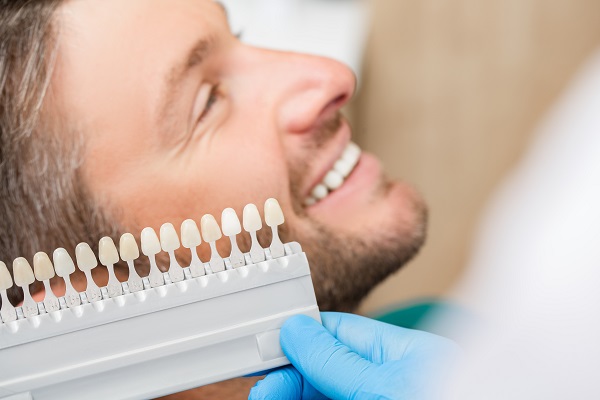Worker's Compensation for Dental Veneers – Dental Injury on the Job

Dental veneers are a popular form of treatment used to address injuries that occur to teeth. In the case of workplace dental injuries, veneers are a great option to go with because they are versatile and long-lasting.
When it comes to injuries that occur while on the job, it is important to know that worker's compensation can and should be utilized. The program itself offers benefits to those who have experienced an injury, illness, or disease as a result of a job. Having an understanding of how the worker's compensation program is handled can be quite helpful to both employers and employees.
Dental veneers for workplace injury treatment
Read below to learn more about worker's compensation and how it is used to address dental injuries on the job. This review also highlights dental veneers and the role that they can play in addressing a dental injury.
How worker's compensation is handled
The worker's compensation program is used to cover medical and/or dental expenses that arise due to injury or illness that occurs in the workplace or as a result of employment. Examples of things that it can be used for include surgical procedures, medications, rehabilitation, or other forms of therapy, such as dental veneer placement.
Additionally, the worker's compensation program also helps to cover lost wages if the employee has to miss work. For example, if a surgical procedure is required, thus requiring a recovery period, worker's compensation is in place to ensure that the employee is paid.
When it comes to dental injuries resulting in a need for veneers, it is not likely that much work will be missed. However, there are typically at least two appointments required when getting dental veneers, which may require the employee to miss a few hours of work. In this case, employers are still responsible for covering the lost wages via the worker's compensation program. It is crucial that the employee documents the appointments and missed work to ensure that the appropriate compensation is provided.
When dental veneers are recommended
In dentistry, veneers are recommended to address imperfections, abnormalities, or in this case, dental injuries. They are only used for front teeth as they are thin shells that go directly over the natural tooth.
Injuries like chips or cracks can benefit from dental veneers. Additionally, more serious workplace injuries like fractures or serious breaks can be treated with dental veneers.
The dental veneer process
When it comes to dental injuries in the workplace, there are a variety of different restorations that might be most suitable. However, dental veneers, in particular, work quite well as they are versatile and look very natural, which allows the front teeth to look brand new. To better understand how dental veneers are placed, understand that:
- The first appointment involves a fitting, in which the dentist takes a mold for the dental lab.
- After a few weeks of waiting, the dental lab will present the dentist with the permanent dental veneer.
- To prepare for treating the injury, the dentist will clean and dry the tooth completely.
- The tooth may be shaved down and etched so that the dental cement will appropriately set.
- A thin layer of dental cement will be applied to the etched tooth. The cement helps to keep the dental veneer in place permanently.
- The dentist carefully places the veneer over the injured tooth and uses a light to cure the entire area.
- After checking the dental veneer, the dentist will send the patient on their way.
Immediately after dental veneer placement, there may be some light sensitivity, which will go away after a couple of days. It is advised to avoid chewy, sticky, or extremely hard foods for a few weeks after the treatment. Following these tips ensures that the dental veneer will last as long as possible.
Find out more
Figuring out worker's compensation can be confusing as there are a lot of moving parts to the entire process. Thankfully, there are specialists who can help answer questions or go over any concerns. Additionally, the entire process can be discussed in depth so there is a better understanding of how things work.
In addition to the actual process of receiving worker's compensation, specialists can help those injured find the right dental team to address the injury. From there, any questions or concerns about getting veneers can be discussed. Reach out today to learn more or to get started.
Request an appointment here: http://www.riversdentistry.com or call Rivers Family Dentistry at (979) 710-2216 for an appointment in our Bryan office.
Check out what others are saying about our dental services on Yelp: Dental Veneers and Dental Laminates in Bryan, TX.
Related Posts
Veneers can be your ally if you want to hide dental imperfections. These clever tools are thin shells custom-made to look like teeth in color and shape. Sometimes, veneers are called dental porcelain laminates or porcelain veneers. These are attached to the front surface of your teeth to improve their appearance. If you want to…
Veneers can improve a patient’s smile in many ways by covering up imperfections in teeth with natural-colored shells. Staining on front teeth is one of the most popular reasons patients choose this type of restoration. People who have lived with discolored teeth can feel uncomfortable smiling in public, and other treatment options may not be…
Dental veneers, ceramic or composite shells that fit over teeth to restore damage or make cosmetic corrections, are a long-lasting, durable treatment, but do eventually need to be replaced. This guide covers some of the questions patients often have about replacing this dental work.Not every set of veneers lasts the same amount of time, but…
Dental veneers can transform a smile. The American Dental Association defines these as "thin, custom-made shells crafted of tooth-colored materials designed to cover the front side of teeth." These restorations are typically made of porcelain or resin and can last for many years. There are some situations in which veneers need to be replaced; most…


